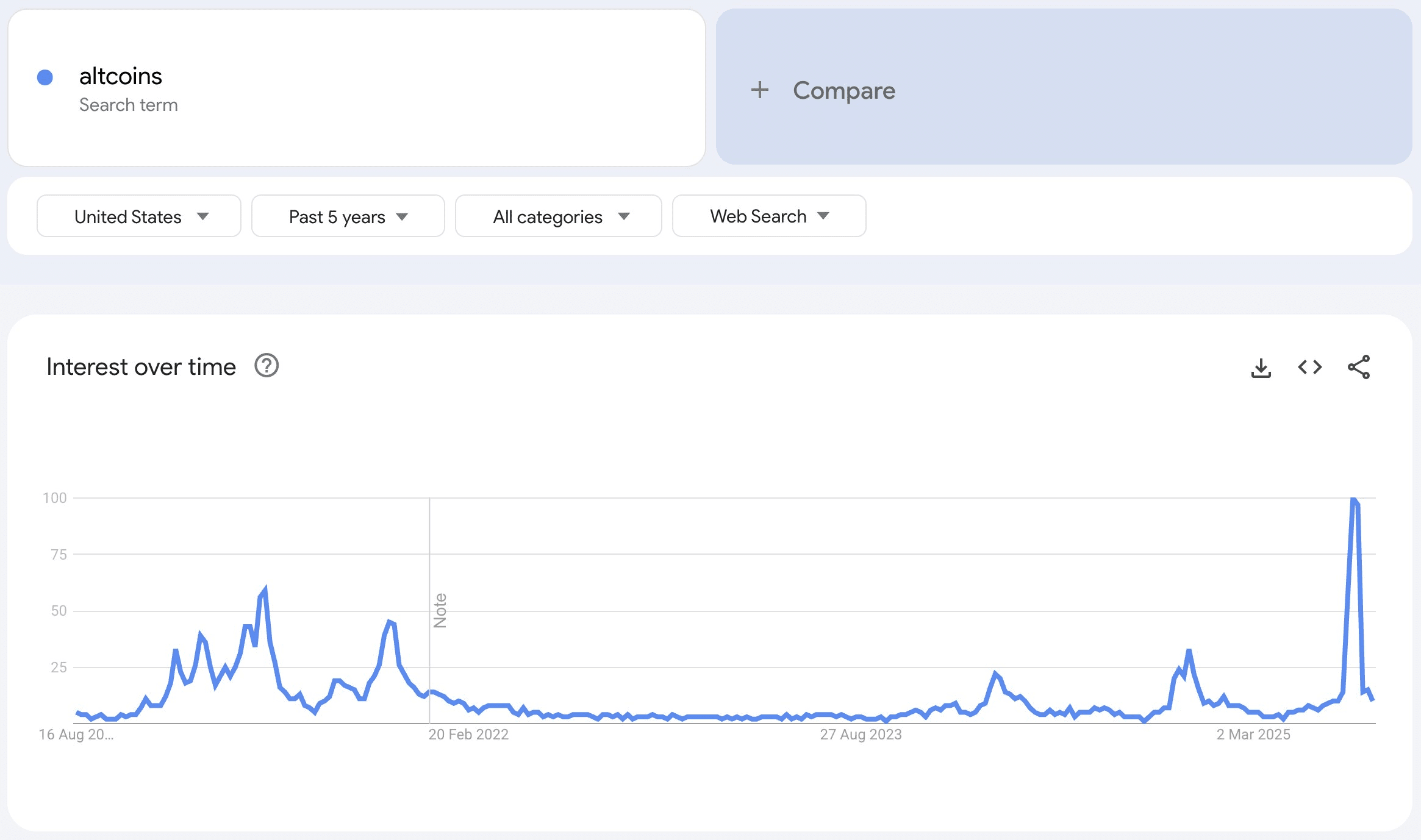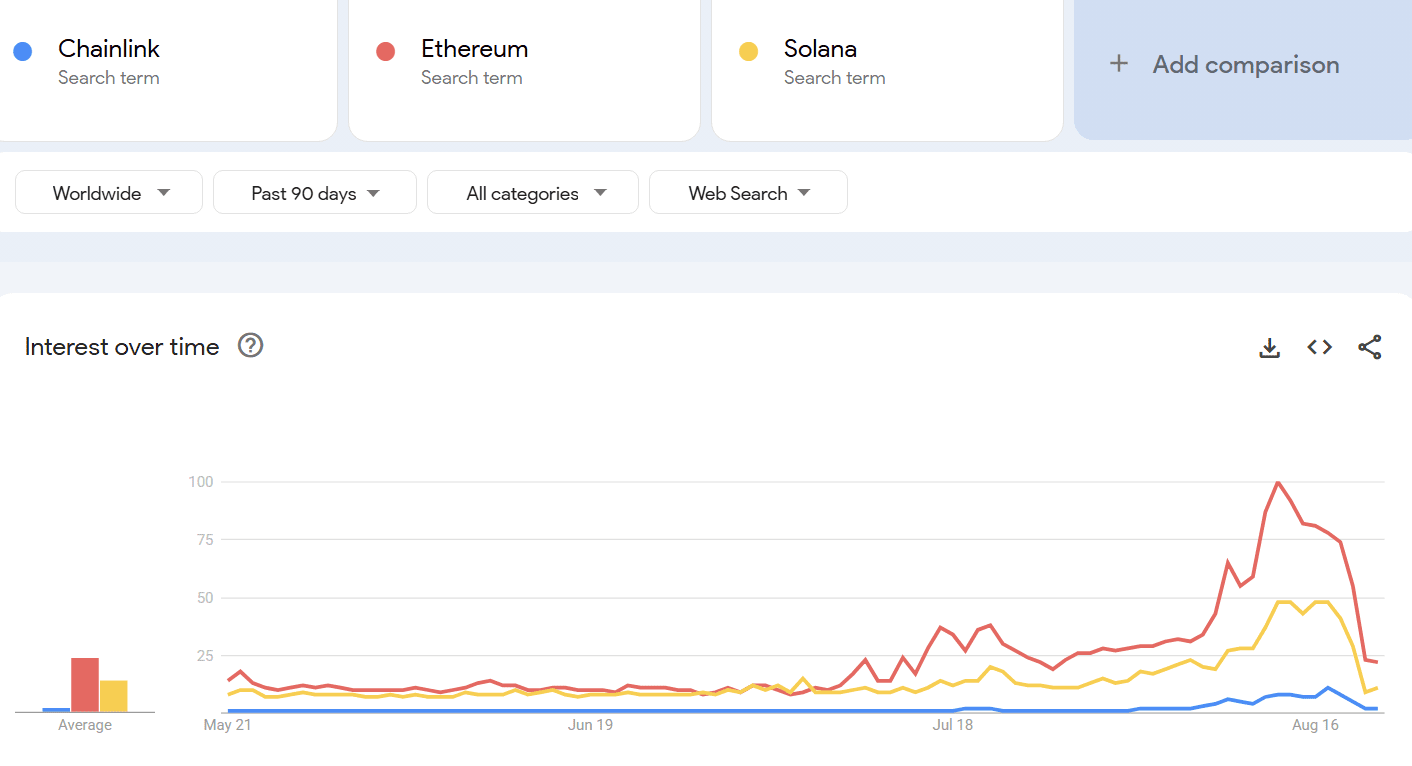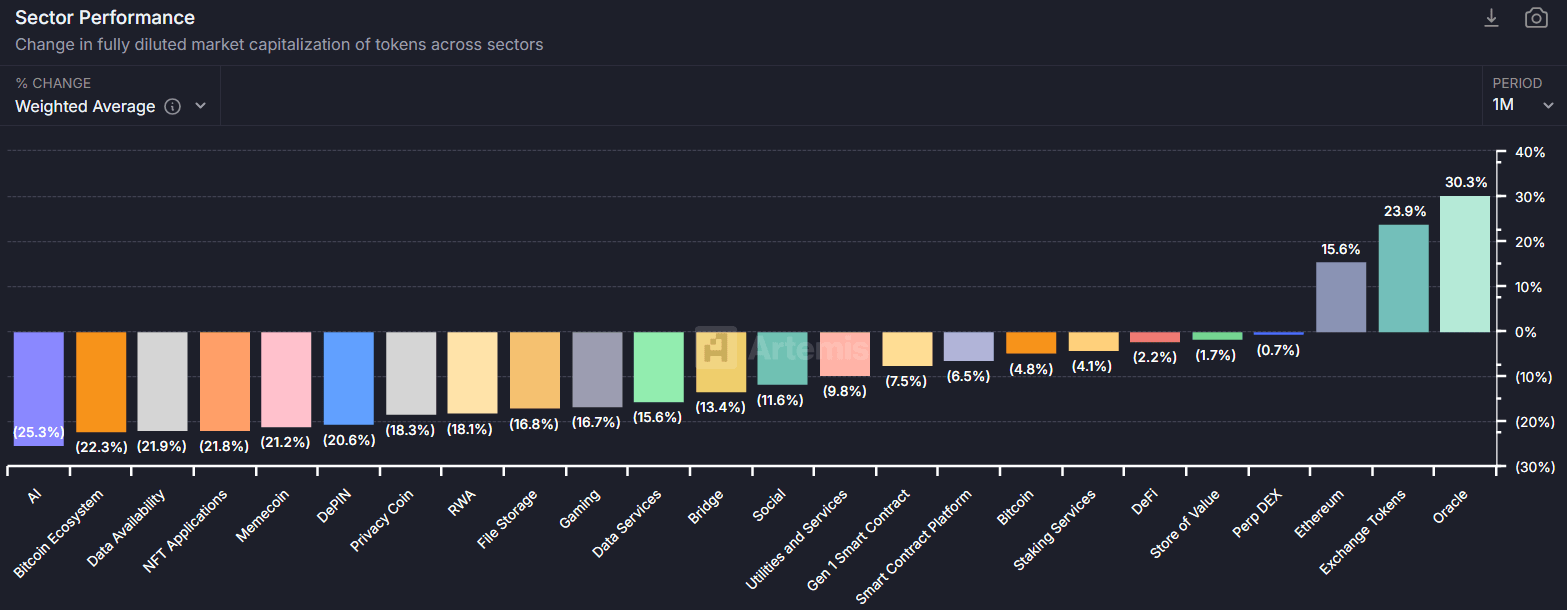The term "altcoins" recently saw a spike in interest on Google Trends, quickly reaching an all-time high (ATH). However, within just one week, search volume collapsed significantly.
This raised a big question: was the so-called "altcoin season" just a short-lived illusion?
The buzz around altcoin season is fading quickly as Google trends decline.
Many investors treat Google Trends as an indicator of new retail interest. Historically, when a crypto-related term trends on Google, new capital often flows into related projects.
Something unusual happened in August. Data from Google Trends in the United States showed that searches for "altcoins" surged to a new high but fell back to the bottom within just one week.

This was not limited to the United States. Globally, Google Trends also recorded searches for "altcoins" that peaked at 100 before collapsing to 16 within a week. A similar "pump and dump" pattern appeared with "altcoin season" and major altcoin names.

Mario Noval mocked at Roundtable, saying that "searches for altcoin season on Google were pumped and dumped faster than a meme coin aggregate."
The chart indicated that the altcoin season nearly ended as soon as it started. The market capitalization of altcoins (TOTAL3) reflected this trend. It rose from $1 trillion to $1.1 trillion, then returned to $1 trillion during the same period.
Some analysts remain optimistic. Cyclop, a well-known analyst on X, believes that the rise of the term "altcoins" still holds a positive meaning. He explained that the term has become popular.
Cyclop stated that "the rise of altcoins simply means that interest is higher than it was in 2021 - but perhaps because there are 1000x more coins now, and 'altcoins' has become the common term. Back then, people just said 'crypto.' So I think this simply shows that interest has begun to rise - but it doesn't mean we've reached a peak."
There are also other reasons why Google Trends may not be effective in measuring new retail demand. Investors are now using AI tools to search for information. Broader market concepts have become familiar enough that many investors no longer need to search for them on Google.
Fragmented altcoin season in August
Artemis data provided deeper insights into how the altcoin season evolved in August.
Although some altcoins surged strongly, most categories recorded negative performance over the past month. Only three narratives performed well: Ethereum, exchange tokens, and Oracles.

ETH benefited from accumulation by publicly listed companies. The rises of BNB and OKB boosted the exchange token category. At the same time, Oracle tokens primarily excelled thanks to the rising price of Chainlink (LINK).
Each successful altcoin had its own driver. OKB rose due to widespread token burns. LINK gained from the Chainlink Reserve plan. As a result, the altcoin season remains fragmented, disappointing investors.
Sandeep, the CEO of Polygon, argues that future altcoin seasons are likely to see fewer tokens experiencing significant surges compared to previous cycles. He highlights a key difference in intrinsic value.
While altcoin seasons thrived in 2017 and 2021 largely due to marketing, smart investors today seek process and real utility in the tokens they choose to invest in.
Sandeep said this is what tells me: retail is searching, but institutions haven't bought the narratives yet. Previous altcoin seasons were driven by speculation, promises, narratives, and marketing. Institutional money is smarter money. It cares about real use and cash flows. The next "altcoin season" won't look like 2017 or 2021. There will be fewer tokens with real use, not just those with better marketing.
However, analysts have not lost hope for a broader altcoin season. Cryptocurrency exchange Coinbase and asset manager Pantera Capital predicted that a new altcoin season could begin as early as September.